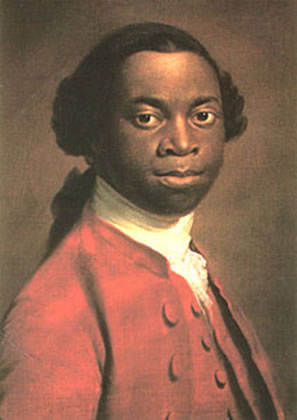Week 8: Captives and Converts
Captured and enslaved people were among the principal groups of early modern actors crossing geographical, cultural, and religious borders, often multiple times in succession. Violently uprooted and forced to adapt to new and harsh realities, some captives shed their old identities and meshed into their captors' societies, while others held fast to elements of their former lives. In many cases, the knowledge and skills captives possessed made them uniquely placed to act as intermediaries or agents of exchange. LINK.
Required Readings
Linda Colley, ‘Going Native, Telling Tales: Captivity, Collaborations and Empire’, Past and Present 168 (2000): 170-93. Link.
James H. Sweet, ‘Mistaken Identities? Olaudah Equiano, Domingos Álvares, and the Methodological Challenges of Studying the African Diaspora’, The American Historical Review 114.2 (2009): 279-306. Link.
Primary Source Texts (select one)
Olaudah Equiano, The Interesting Narrative of the Life of Olaudah Equiano, or Gustavus Vassa, the African [1789] (Cambridge: Cambridge University Press, 2013), pp. 89-113. Link.
Khalid Bekkaoui (ed.), White Women Captives in North Africa: Narratives of Enslavement, 1735-1830 (Houndmills, Basingstoke: Palgrave Macmillan, 2010), 2.1: ‘Remarkable History of the Countess De Bourk’s Shipwreck, and Her Daughter’s Captivity, 1735', pp. 46-57. Link.
Seminar Questions
- What were the different types of border crossings taking place in the context of captivity?
- List possible possible reasons why captives would ‘cross over’ into captors' societies?
- Regarding his return to Britain, Thomas Pellow stated that: ‘I did not know my own father and mother, nor they me’ (Colley: 171). Compare Pellow's experience of alienation to that of other go-betweens: what does it tell us about the transformative effect of border crossings?
- In what ways did Domingos Álvares act as a go-between and what are the wider crossings his life bears testimony to?
- How does the case of Domingos Álvares help us understand the broader question of how go-betweens saw themselves and were seen by others?
- James Sweet states that 'Domingos really was the chameleon-like character who emerges in the documents, shifting his identification (or having it shifted for him) to fit the circumstances’. What made possibilities for shifting identities in the Atlantic different than in the Mediterranean?
- Colley mentions how captivity narratives ‘meshed comfortably with the tradition of spiritual autobiography, while also becoming progressively coloured by the novel’ (174) – Can you identify evidence for this in Equiano and De Bourk’s accounts?
- How can we read De Bourk's account as a testament to European anxieties and self-perceptions?
- In what ways does Olaudah Equiano's account testify to the profound mental effects of (forced) border crossings?
Further Reading
Ali, Omar H., Islam in the Indian Ocean World: A Brief History with Documents (Boston, MA: Bedford St. Martin’s Press, 2016).
Amanat, Abbas, and Arash Khazeni, ‘The Steppe Roads of Central Asia and the Persian Captivity Narrative of Mirza Mahmud Taqi Ashtiyani’, in: Nile Green (ed.), Writing Travel in Central Asian History (Bloomington: Indiana University Press, 2014), pp. 113-132.
Beach, Adam R., ‘African Slaves, English Slave Narratives, and Early Modern Morocco’, Eighteenth-Century Studies 46.3 (2013), 333-348.
Carretta, Vincent, Equiano the African: Biography of a Self-made Man (New York and London: Penguin Books, 2006).
Clines, Robert John, The Converting Aea: Religious Change and Cross-Cultural Interaction in the Early Modern Mediterranean', History Compass 17.1 (2019), 1-15.
Colley, Linda, Captives: Britain, Empire, and the World, 1600-1850 (London: Jonathan Cape, 2002).
Davis, Natalie Zemon, Trickster Travels: A Sixteenth-Century Muslim Between Worlds (New York: Hill & Wang, 2006).
Davis, Robert C., Christian Slaves, Muslim Masters: White Slavery in the Mediterranean, the Barbary Coast and Italy, 1500-1800 (New York: Palgrave Macmillan, 2003).
Duffy, Eve M., and Alida C. Metcalf, The Return of Hans Staden: A Go-Between in the Atlantic World (Baltimore, MD: Johns Hopkins University press, 2012).
Eaton, Richard, A Social History of the Deccan, 1300-1761: Eight Indian Lives (Cambridge: Cambridge University Press, 2005), Ch. 5: ‘Malik Ambar (1548-1626): The Rise and Fall of Military Slavery’, pp. 105-128.
Graf, Tobias P., The Sultan’s Renegades: Christian-European Converts to Islam and the Making of the Ottoman Elite, 1575-1610 (Oxford: Oxford University Press, 2017).
Heinsen-Roach, Erica, Consuls and Captives: Dutch-North African Diplomacy in the Early Modern Mediterranean (Rochester, NY: University of Rochester Press, 2019).
Hershenzohn, Daniel, The Captive Sea: Slavery, Communication, and Commerce in Early Modern Spain and the Mediterranean (Philadelphia: University of Pennsylvania Press, 2018).
Klarer, Mario (ed.), Piracy and Captivity in the Mediterranean 1550-1810 (London: Routledge, 2018).
Krstic, Tijana, ‘Illuminated by the Light of Islam and the Glory of the Ottoman Sultanate: Self-Narratives of Conversion to Islam in the Age of Confessionalization’, Comparative Studies in Society and History 51.1 (2009): 35-63.
Matar, Nabil, British Captives from the Mediterranean to the Atlantic, 1563-1760 (Leiden and Boston: Brill, 2014).
Rothman, Natalie, ‘Conversion and Convergence in the Venetian-Ottoman Borderlands’, Journal of Medieval and Early Modern Studies 41.3 (2011): 601-633.
Sparks, Randy J., The Two Princes of Calabar: An Eighteenth-Century Atlantic Odyssey (Cambridge, MA: Harvard University Press, 2004).
Sweet, James H., Domingos Álvares: African Healing, and the Intellectual History of the Atlantic World (Chapel Hill: The University of North Carolina Press, 2011).
Ward, Kerry, Networks of Empire: Forced Migration in the Dutch East India Company (Cambridge: Cambridge University Press, 2014).
Weiss, Gillian, Captives and Corsairs: France and Slavery in the Early Modern Mediterranean (Stanford, CA: Stanford University Press, 2011).

